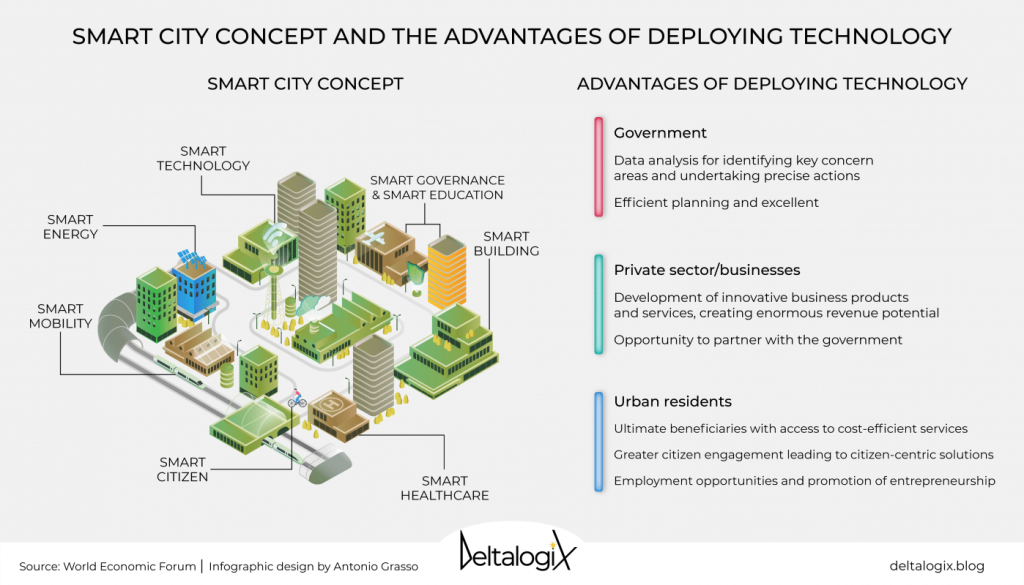The Power Of Examples: Transforming Cities With Smart Sustainable Solutions
Examples of Smart Sustainable Cities: A Glimpse into the Future
In this fast-paced era of technological advancements, it is imperative for cities to adapt and embrace new ways of sustainable living. As urbanization continues to rise, the concept of smart sustainable cities has gained tremendous popularity. These cities are built on the principles of environmental consciousness, technological innovation, and social inclusivity, offering a promising vision for the future. Let us embark on a journey to explore some remarkable examples of smart sustainable cities around the world.
What are Smart Sustainable Cities?
Smart sustainable cities are urban areas that utilize advanced technologies, data analytics, and renewable energy sources to improve the quality of life for its residents while minimizing environmental impact. These cities integrate intelligent infrastructure, efficient transportation systems, waste management solutions, and smart grids to create a harmonious and sustainable environment.
2 Picture Gallery: The Power Of Examples: Transforming Cities With Smart Sustainable Solutions


Who Benefits from Smart Sustainable Cities?
The benefits of smart sustainable cities extend to all residents, businesses, and the environment. Citizens experience improved air quality, reduced traffic congestion, and enhanced safety through intelligent transportation systems. Local businesses thrive in an ecosystem that supports sustainable practices, attracting investors and fostering economic growth. Furthermore, these cities protect natural resources and reduce carbon emissions, contributing to a healthier planet for future generations.
When and Where Did the Concept Originate?

Image Source: wikimedia.org
The concept of smart sustainable cities emerged in the early 2000s as a response to the challenges posed by rapid urbanization and climate change. The first pioneers in this field were cities like Singapore, Barcelona, and Copenhagen, which recognized the need to integrate technology and sustainability into urban planning. Since then, numerous cities across the globe have joined the movement and implemented innovative strategies to become smarter and more sustainable.
Why Should Cities Embrace Smart Sustainable Practices?
The urgency to adopt smart sustainable practices arises from the pressing challenges faced by urban areas today. As cities continue to grow, resources become strained, and environmental degradation accelerates. Smart sustainable cities offer a way to alleviate these issues by optimizing resource utilization, reducing waste, and promoting eco-friendly lifestyles. Additionally, these cities become more resilient to climate change impacts, ensuring the well-being and prosperity of their inhabitants.
How Do Smart Sustainable Cities Function?
Smart sustainable cities rely on a combination of cutting-edge technologies and intelligent systems to function efficiently. Internet of Things (IoT) sensors are strategically placed throughout the city to collect data on various parameters such as energy consumption, waste management, and air quality. This data is then analyzed and used to optimize resource allocation, make informed decisions, and monitor the city’s performance. Citizens actively participate in this process through mobile applications and digital platforms that enable them to contribute to sustainability efforts.
Frequently Asked Questions about Smart Sustainable Cities
Q: Are smart sustainable cities only for developed countries?

Image Source: deltalogix.blog
A: No, smart sustainable cities can be found in both developed and developing countries. Initiatives like the 100 Smart Cities Mission in India aim to transform urban areas into sustainable hubs through technology and innovation.
Q: How are smart sustainable cities funded?
A: Smart sustainable cities are funded through various sources, including public-private partnerships, government grants, and investments from tech companies. The returns on investment come in the form of increased efficiency, reduced costs, and improved quality of life.
Q: Are smart sustainable cities expensive to build?
A: While the initial investment may be significant, smart sustainable cities yield long-term benefits that outweigh the costs. The integration of renewable energy sources, efficient infrastructure, and optimized resource management leads to substantial savings in the long run.
Q: Can existing cities transition into smart sustainable cities?
A: Yes, existing cities can transition into smart sustainable cities by implementing gradual changes and adopting innovative technologies. Retrofitting buildings with energy-efficient systems, improving public transportation networks, and promoting sustainable practices are some of the steps that can be taken.
Notable Examples of Smart Sustainable Cities
1. Singapore
Singapore is renowned for its smart city initiatives, which have transformed it into a global benchmark for sustainable urban development. The city-state utilizes advanced technologies to optimize energy usage, monitor water resources, and enhance transportation systems. Singapore’s intelligent infrastructure, coupled with its commitment to green spaces and biodiversity conservation, makes it a prime example of a smart sustainable city.
2. Barcelona
Barcelona has embraced a holistic approach to sustainable urbanization, incorporating smart solutions into various aspects of city life. The city’s use of smart grids for energy distribution, intelligent street lighting, and an extensive network of sensors has significantly reduced energy consumption and improved overall efficiency. Barcelona’s commitment to sustainability is also evident in its promotion of renewable energy sources and efforts to combat climate change.
3. Copenhagen
Copenhagen has long been a frontrunner in sustainable urban planning. The city’s ambitious goal to become carbon-neutral by 2025 is supported by a range of innovative measures. Copenhagen’s extensive cycling infrastructure, efficient waste management systems, and commitment to renewable energy make it an exemplary smart sustainable city. The city’s emphasis on citizen engagement and inclusivity further strengthens its sustainable practices.
Conclusion
Examples of smart sustainable cities demonstrate the tremendous potential for a future where technology and sustainability coexist harmoniously. These cities serve as beacons of hope, showcasing how innovative solutions can address pressing urban challenges while preserving the environment. By embracing the principles of smart sustainable development, we can create cities that are not only efficient and resilient but also nurturing and inclusive for generations to come.
This post topic: Electric Car Technology


